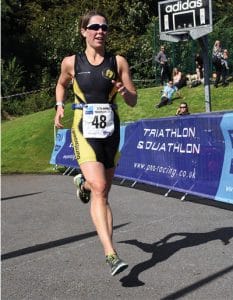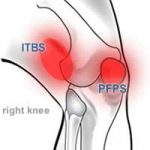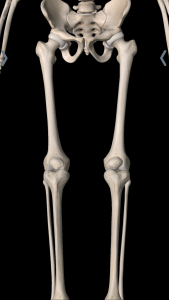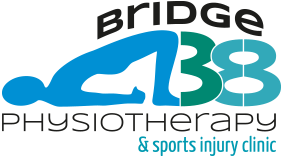
As a fellow runner who has suffered from runners knee pain I understand the frustrations it can cause not just with running but also in day to day activities too. However, I have also managed to overcome it successfully enough to continue running. That is not to say it has disappeared completely but with the correct self managment and understanding of the condition I have the confidence that I can keep running without increasing any symptoms.
So what is runners knee aka patellofemoral syndrome?
 Runners knee is a a vague term describing pain between the patella (knee cap) and the femur thigh bone. It is known as patellofemoral syndrome and you don’t have to be a runner to get it either. The other form of runners knee that people might be familiar with is pain on the outside of the knee where the ileotibial band attaches and is know as ileotibail band sydrome (ITBS). For the purpose of this blog we are referring to runners knee in relation to the patellofemoral joint (PFJ). It is common, with over 25% of people being diagnosed with patellofemoral pain sydrome (PFPS) at some point during their life and 2.5 million runners will be diagnosed with PFPS in any one year. Unfortunately, there isn’t one simple cause and there can be a variety of symptoms associated with it.
Runners knee is a a vague term describing pain between the patella (knee cap) and the femur thigh bone. It is known as patellofemoral syndrome and you don’t have to be a runner to get it either. The other form of runners knee that people might be familiar with is pain on the outside of the knee where the ileotibial band attaches and is know as ileotibail band sydrome (ITBS). For the purpose of this blog we are referring to runners knee in relation to the patellofemoral joint (PFJ). It is common, with over 25% of people being diagnosed with patellofemoral pain sydrome (PFPS) at some point during their life and 2.5 million runners will be diagnosed with PFPS in any one year. Unfortunately, there isn’t one simple cause and there can be a variety of symptoms associated with it.
where and why do I get pain?

Pain is generally felt at the front of the knee but can spread around either side. The patella sits in a small groove on the femur called the trochlea and the role of the patella is to make the quadricep muscles more efficient at extending the knee. As the knee extends the patella glides in the trochlea. If there is a change in the contact pressures between the patella and the femur this can create a hotspot of pressure in the pain senstive subchondral bone. This pain can come from either the patella, the femur or even the surrounding soft tissues of the knee due to the stretching or compression of the tissues.
What Do The Symptoms Tell us?
There can be a number of subtle or obvious symptoms you may be having including pain if you run. It is important to establish what these are as they give us clues as to why you are getting your symptoms and how to manage them.
Symptom 1:
Pain at the front of the knee when sitting for long periods also known as cinema goers knee, which can be worse when crossing the legs.
Cause: Tight quadriceps will compress the patella against the femur increasing the load between the two bones. Tight muscles surrounding the hip can pull on the ileo tibial band down the side of the thigh which in turn can pull and compress the patalla outwards.
symptom 2:
Pain when walking uphill.
Cause: If the calf muscles are tight the heel will lift earlier when walking uphill causing the knee to have to bend more than normal. If the gluteal (hip) muscles are weak the thigh may rotate inwards increasing the contact pressure between outside of the patella and the femur.
Symptom 3:
Pain with different footwear
Reasons: High heels increase the compression across the patellofemoral joint but also reduce stability around the ankle. Flip flops or similar shoes may lack enough support to the foot causing the foot to excessively roll inwards. Some shoes just don’t provide enough shock absorption.
Symptom 4
Pain going up or down the stairs.
Causes: Poor gluteal strength is often linked with pain on going upstairs. Our gluteals control the position of the thigh (femur) bone. If the femur rotates inwards as you push upwards on the step this will increase the contact pressure between at the outside of both the femur and patealla. Tight or weak quadriceps will also increase the compression force at the PFJ when coming downstairs along with weak gluteals.
symptom 5
knee pain during or after running.
Reasons: Training error contributes to a large percentage of running injuries including pateallofermoral pain. A sudden increase in intensity, frequency or volume can quickly cause overloading and subsequently injury. When it comes to how we run, overstriding, is a very common fault we see with runners knee. Overstriding combined with landing on a straight knee increases the ground reaction force going up through the knee and the patellofemoral joint. The above causes can also relate to why you get pain in the knee when you run.
Summary:
Patellofemoral pain syndrome or runners knee is multifactorial. Contributing factors can relate to muscle weakness around the hip and thigh, muscles that are tight and training errors. A thorough assessment can determine what the key issues are in order to develop the appropriate management plan.
In PART 2 I will discuss the various ways you can help yourself manage this condition depending on what symptoms you have.
